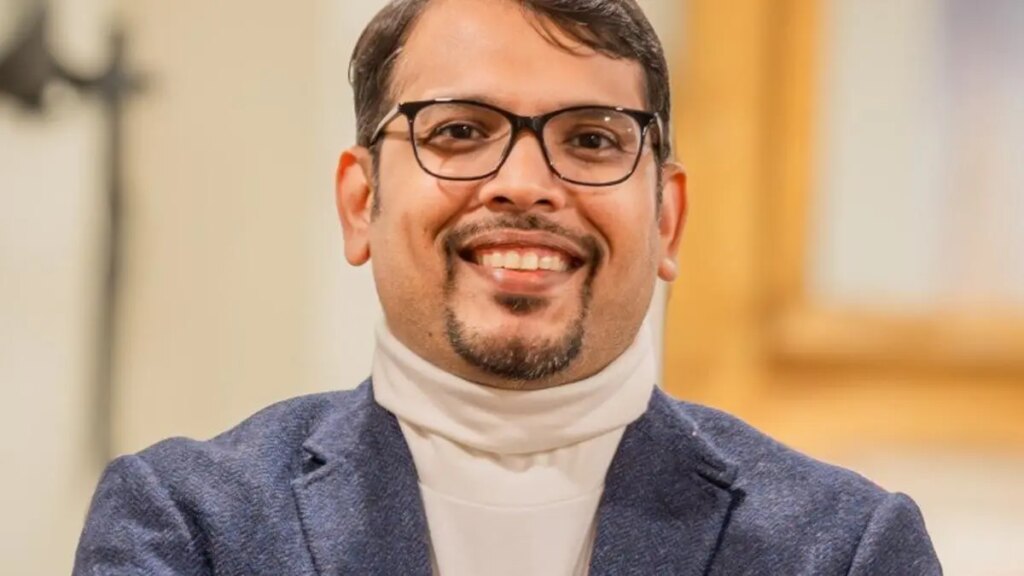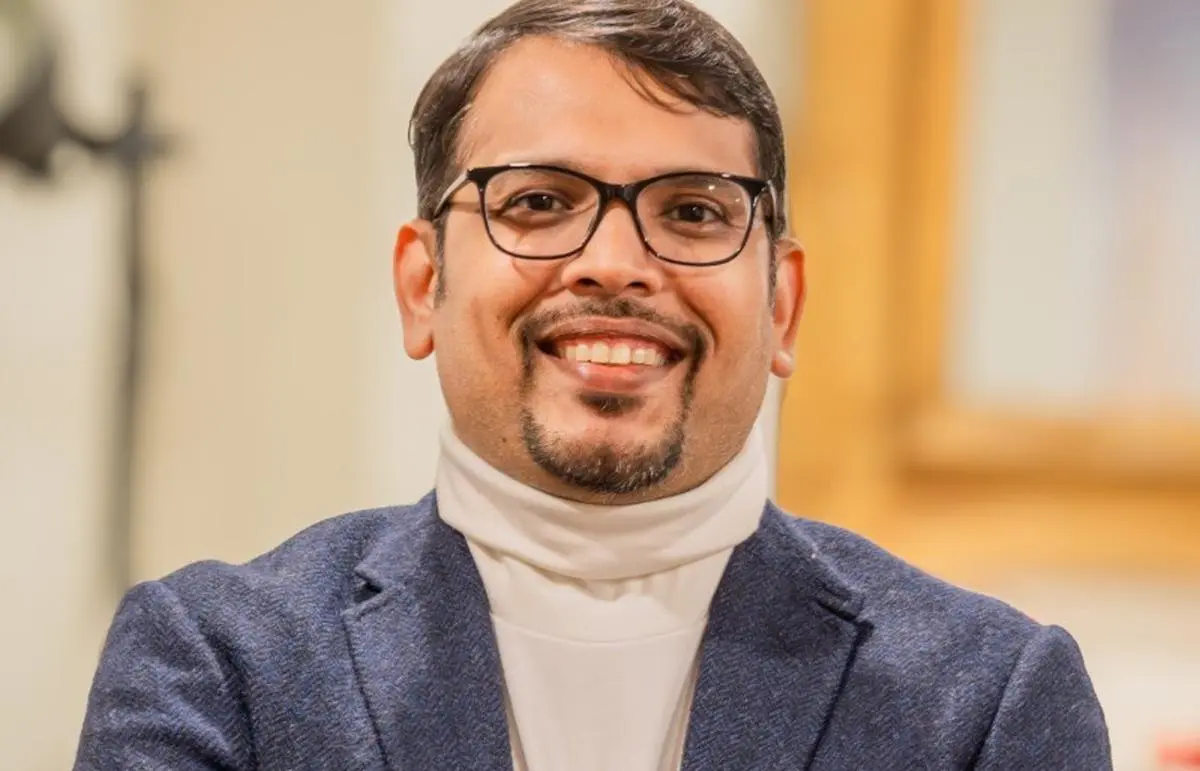
Mhaskar says having caste in the census is not at all problematic, it will only enhance discussion.
| Photo Credit:
By Special Arrangement
As the government announces plans to include caste in the next census—the first comprehensive caste enumeration since 1931—the nation grapples with fundamental questions about its social fabric. To understand the implications of this, senior journalist Saba Naqvi interviewed Sumeet Mhaskar, labour sociologist and thinker, as part of Frontline Conversations. Mhaskar explains why this statistical exercise is neither merely political opportunism nor a simple path to social justice, but rather an essential tool for understanding India’s complex social reality.
The interview examines the vastly different outcomes of caste-based politics in Tamil Nadu versus Bihar, the historical suppression of reservation policies by bureaucracies, and why documenting caste—like gender or poverty—is crucial for addressing structural inequalities. In a country where only 5 per cent of jobs offer adequate wages and security, the real challenge may not be reservation alone but the shrinking public sector and quality employment.
Excerpts:
Is this another social justice moment or just a political ploy?
It’s a bigger question. It could go in both directions. As far as social justice is concerned, it is not going to directly produce social justice. It is just a data collection exercise at this moment. Whether that will eventually lead to social justice will depend on the political will of the ruling party whenever this data is released. Whether this is a political ploy depends on whether it has mass appeal. So far, the Congress party has not necessarily been able to mobilise the masses on the issue of the census, which would have been reflected in the national elections. But there is certainly pressure on the BJP to announce this census.
Everybody says they understand the social justice part of it. I am from Uttar Pradesh (UP). One saw the transformation of politics, the Mandal-era parties. However, the number of jobs is shrinking. I have just been talking to some labourers who informed me that despite the hardships of their lives as migrants from eastern UP, they are earning Rs.30,000 to Rs.40,000, whereas educated people with degrees are earning Rs.15,000 to Rs.20,000. So, what is the logic of a caste census?
One widely known fact is that there is inequality in access to well-paid employment based on social background. The problem you highlighted is real. Even when the census figures are out, there are at least two considerations: higher education opportunities and public employment. If you look at public employment, you have roughly two jobs maximum out of 100 jobs. Within those two jobs, there is further reservation. So one job will be reserved, and then the further 1 per cent will be divided among Scheduled Castes, Scheduled Tribes, and OBCs. We are really talking of one job out of 100 where you will have affirmative action, which means the total volume of whatever social justice might happen has reduced significantly.
Regarding higher education, if we look at government policies over the last 10-15 years, we have moved in the direction of privatisation, which means that higher education opportunities available through affirmative action have reduced significantly. So that part of including caste in the census may not have a huge impact on policies. On the political front, as far as claiming more seats in Parliament or Assemblies or having better representation for groups within the Other Backwards Classes or within Scheduled Castes or Tribes, that probably will be intensified. But for concrete benefits in higher education and public employment, unless the government changes its policies, we don’t see much possibility there.
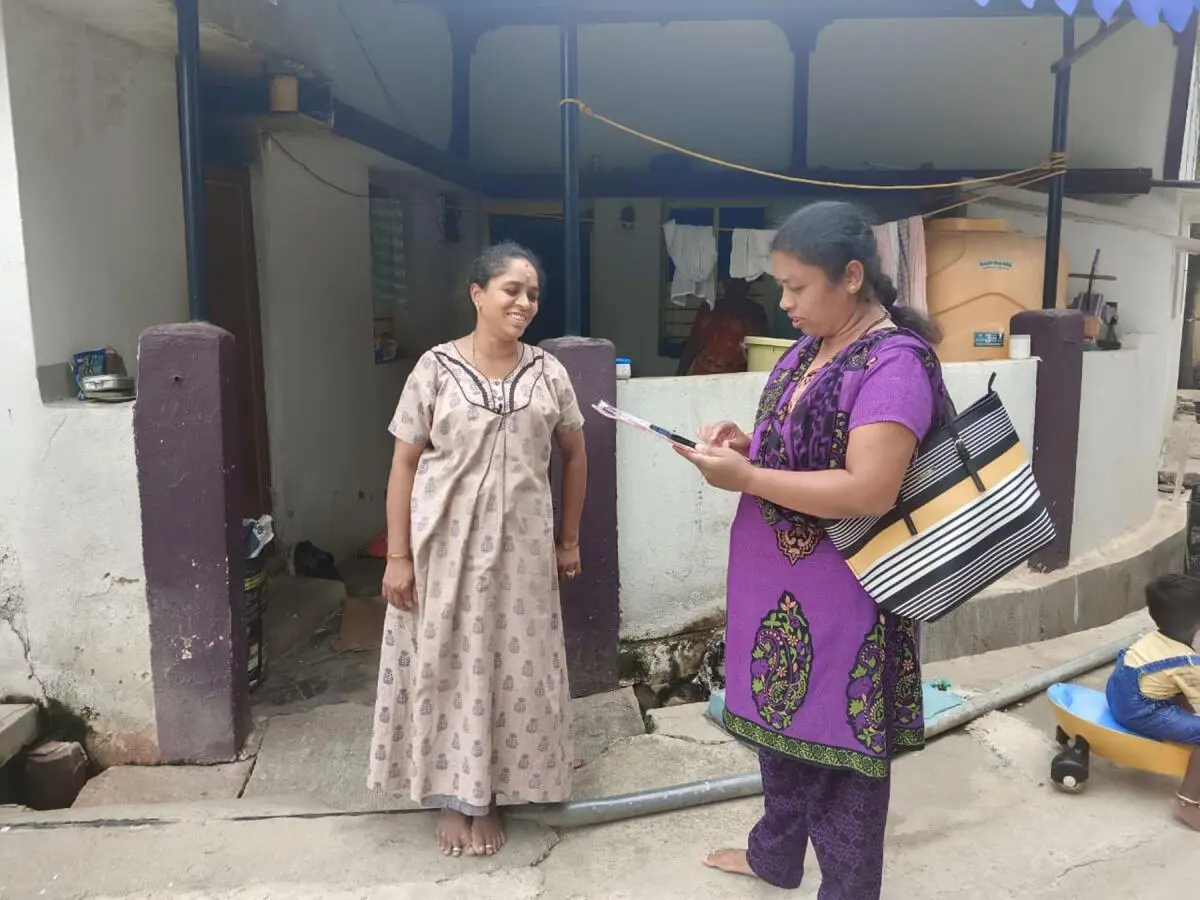
Enumerator collecting data on the hand-held device to record the empirical data on sub-caste demographics at Narayanaghatta in Bangalore urban as Karnataka begins statewide caste census for scheduled castes (SC).
| Photo Credit:
The Hindu
But it is an empowering tool. And there is obviously the question of how we are doing any data without the data? Which is what we were doing by not having it. Can you explain why we did not enumerate beyond the Scheduled Castes and Scheduled Tribes? Why did we fail to get the detailed caste census since 1931?
After 1931, there was a war, and the data was problematic because of that. But by 1951, India had already achieved Independence. The discussion then was whether we should document all castes apart from Scheduled Castes and Scheduled Tribes. For SC and ST, there were constitutional obligations such as reservations in higher education and public employment as well as parliamentary reservations. The discussion was whether we should include all castes and enumerate them. What prevailed over this was the national unity concern. Jawaharlal Nehru’s concern for national unity, Sardar Vallabhbhai Patel’s concern for national unity prevailed over the concern of documenting all castes.
What was Ambedkar’s concern?
He definitely was in favour of documenting. There was a question raised to him whether Scheduled Castes would still be recorded in the census, and he said, ‘Yes, I hope so.’ Then there was the first Agriculture Minister of India, Punjabrao Deshmukh from Maharashtra. He was a consistent advocate of documenting all castes in the census. Deshmukh was a Maratha from the Vidarbha region—a very important social justice advocate who consistently made this demand from the 1948 Constituent Assembly debates up to 1951. But this concern was pretty much kept out by the Congress leadership.
My theory is that the Congress lost out so much in the Hindi heartland because it only had upper caste leadership post-Mandal. But now we are seeing a different articulation by the Congress under Rahul Gandhi, who talks about the caste census. I would also like to understand how Tamil Nadu approached this through the Dravida movement. How were their contours different? Tamil Nadu has done well on most indicators—is it because they had a social justice revolution before everyone else?
Partly yes and partly no. As far as social justice is concerned, the dominant castes also benefit from affirmative action there. Different backward categories were created, which is why they have reservation up to 69-70 per cent. The scope of beneficiaries was and remains wider in Tamil Nadu.
There are several other factors in terms of education, various histories of development, and the seriousness with which the State has implemented different schemes. For example, the midday meal scheme originated in Tamil Nadu before becoming a national programme. By documenting those backward groups, nothing has stopped the development of that State. This counters the assumption that documenting all castes somehow impedes development.
Also Read | Caste census: A surgical strike on India
The assumption that there is some kind of disunity in documenting caste goes back to the Congress leadership, and later, even the RSS had misgivings on this front. Now, the BJP has surprised everyone by announcing that they will do a caste census. But let me ask you about Maharashtra, which is also Ambedkar’s State—a complex, large State. What is the situation with caste assertion in Maharashtra? It always confuses people. It had great social reformers, and you also have the origins of right-wing ideologies. What is the caste situation in Maharashtra?
As far as caste in Maharashtra is concerned, there is a long history of the non-Brahmin movement beginning in the 19th century with Mahatma Jyotirao Phule, and further when Ambedkar takes up the baton of leading the social justice movement. Certain issues regarding caste are settled in Maharashtra in terms of the discourse of social justice, so there are fewer contestations over that. Irrespective of political ideology, there is a consensus around social justice.
The idea of Bahujan is significant—even though Marathas technically may not associate with Bahujan politics otherwise, when they want to claim political power, they also claim to be part of the Bahujan. So there is some consensus already built around that. This is not to say there is complete consensus.
What has happened in the last few years in Maharashtra, and in other States as well, is the demand from OBCs and dominant castes for reservation. The OBC reservation has constantly been challenged by the Supreme Court, citing the lack of figures. So within OBC groups, there is a demand to have caste in the census. Now the Marathas are demanding reservations, and therefore the census would clearly help resolve that problem as well.
Are you in favour of the judgment about the creamy layer in Scheduled Caste categories? There are complete divisions on it.
As far as the creamy layer is concerned, that was not part of the main judgment, so as of now, it is not applicable. What the Supreme Court has said in the main judgment is that castes which have benefited slightly better need to be created as a separate group, and those that have been left behind can be treated as a separate group. Right now, in Haryana, you have “general Scheduled Caste” and “deprived Scheduled Caste”. The judgment was divided because it allowed for the sub-classification of Scheduled Castes. It was not about adding a creamy layer because it’s not constitutionally possible to do that.
Now that India’s preeminent ruling party has declared the intention of conducting a caste enumeration along with the next census, can you explain to us as a social scientist what this entails? When will the census take place? Do you have any idea?
I think the question is how will it happen?
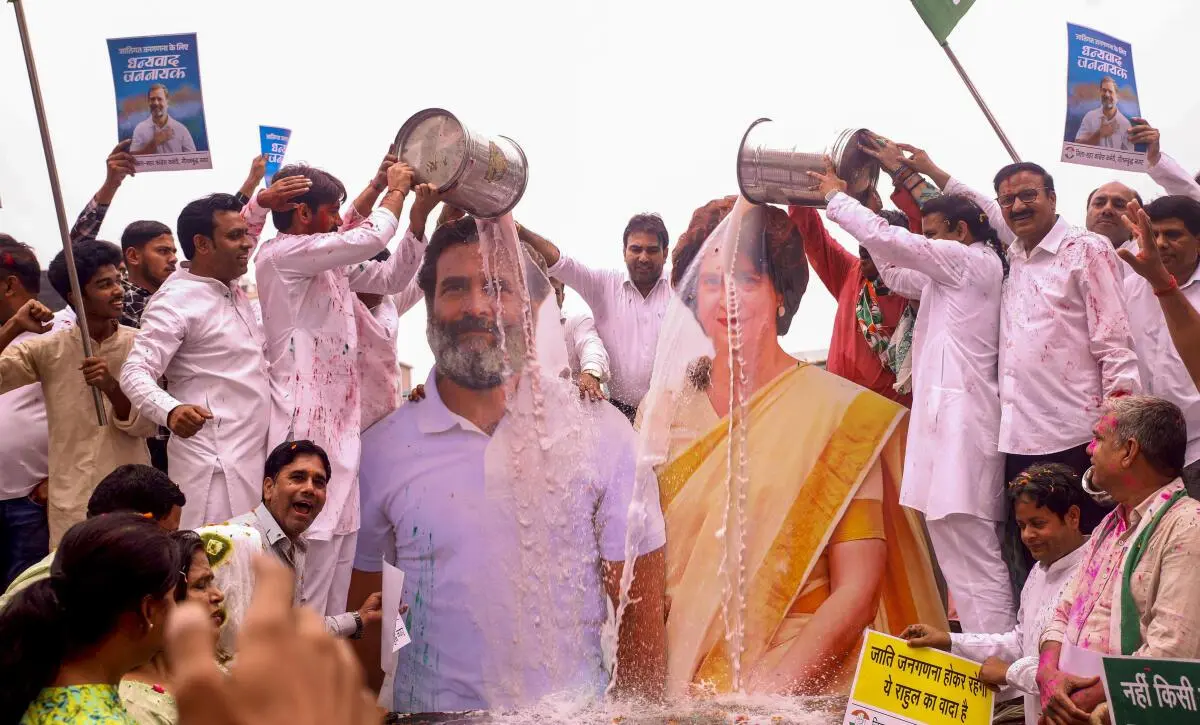
Congress workers take part in a rally to celebrate the centre’s decision to include caste enumeration in the upcoming national census, in Noida, Friday, May 2, 2025.
| Photo Credit:
PTI
And do we not have to have a separate budgetary allocation before a massive exercise like the census takes place? And also, have we not faltered in not doing the census on time? It should have been in 2021. You, as a social scientist, are relying on 2011 figures, am I right? Please explain to viewers what the census exercise is and how it should be done.
There are a couple of things here. First, the census is conducted every 10 years. Of course, we are late, which is unfortunate and should not have happened. Second, when people talk about “caste census,” they get confused, thinking there will be some new exercise conducted, which is wrong. You already have a long form where all kinds of information is gathered from individuals. It’s just one extra column added to that form—that of caste. That’s it. In terms of budget, nothing has changed. It’s just one extra question that will be asked, just as your gender, age, family members, and everything else is asked. That’s why people are calling it a “caste census”. It should be “caste in census”—like gender in census.
That’s very clarifying—not a caste census, but caste in the census.
Exactly. It’s like your gender is asked, your religion is asked, your language is asked. Similarly, your caste will be asked. Technically, it’s not a big deal in terms of expenditure. All developed countries like the United States, Canada, and the United Kingdom do these kinds of censuses. They record races and ethnicities, and they’re still doing well economically. To come back to your question, this is a simple exercise where enumerators will go to each household.
But they have to allocate a budget and tell us when. They haven’t announced the census—they’ve announced an intention of a very lofty exercise without saying when it will take place. Am I right?
Not necessarily. The census will have to take place at some point anyway, so budgetary allocation is not a problem. Irrespective of whether you record caste or not, the census will be conducted.
But we don’t know when at this point.
Exactly. That is a concern. But they have made clear their intention to add an extra column to the form.
The BJP does respond to the reality of caste—they called it “social engineering” during the Mandal era. However, the delimitation of States is also coming up, and the southern States are very jittery about that. There’s the question of delimitation based on population, the reservation for women promised by the Prime Minister after the next census and the delimitation exercise. If the data shows backward castes are expanding, does it put a greater ideological burden on States like Tamil Nadu to somehow balance losing proportional seat representation?
These are two separate things. General population issues are one thing, and States will have to take a call on that. For Indian federalism to work—the structure of States and the Union government—some form of agreement will have to be reached. That’s a different matter. When it comes to having information on caste, we already have surveys done by Karnataka, Telangana, and Bihar, and they have more or less produced expected results.
What are those results?
OBCs have greater numbers. The upper caste groups have a larger share of land. All of this is more or less documented. Some of these findings are not really surprising, with minor surprises here and there. I think all political parties know what the survey will eventually document. Any political party has to be a good anthropologist as well.
Yes, they are.
They need to know which caste is where, which micro seat. In that sense, every political party already has an informal census with them. Any successful political party needs to have control over these demographics.
As I said, I am from Uttar Pradesh, which has fared better, but I’ve done a lot of reporting in Bihar. Bihar operates mostly on caste loyalties, and yet there is such poor delivery of basic needs to the people there. You are also an expert in migration studies. How is it that politics runs on caste and yet there is no real welfare for the people in terms of education, health—nothing? You’ve improved infrastructure—that seems to be the model. Make good roads; improve them from Lalu to Nitish Kumar. But when you look at a State like that—am I right in saying that Bihar could proportionately give the largest number of migrants to India?
It is one of the largest exporters of migrants throughout the country.
I’ve seen them sitting on trains, just leaving. So if this caste assertion is not culminating in something positive… How do we clarify the difference between the Bihar story and the Tamil Nadu story? Both States have the theme of caste assertion, but one State moved on way before and one State is lagging.
As far as Bihar is concerned, backward caste assertion took place much later—in the late 70s—and by the 80s, that’s when you have Lalu Prasad coming to power. Whereas in Tamil Nadu, already by Independence, the backward castes had control over State power and therefore they were able to access resources from the State.
For Bihar, that almost took until the 1990s, because even when Lalu was in power, the bureaucracy did not make it easier for him to deliver. It’s only now we can see some results. We’re comparing Tamil Nadu, which already had control over politics from the 1950s, with Bihar, where access to power and decisions about resource redistribution only happened from the 1990s onwards. Therefore, the period of assessment is very small for Bihar. In that regard, Bihar has a historical disadvantage compared to Tamil Nadu.
It does. And Tamil Nadu has ports and British infrastructure, while Bihar was a permanent settlement land State.
And also education because of the Madras Presidency. Access to education and mobility was obviously much higher. That partly explains these two different stories.
The next election in India is the Bihar election, and the quick analysis is that the BJP has announced the caste census because of Bihar. However, they’re riding a tiger which they cannot control because you cannot put this back in.
Never.
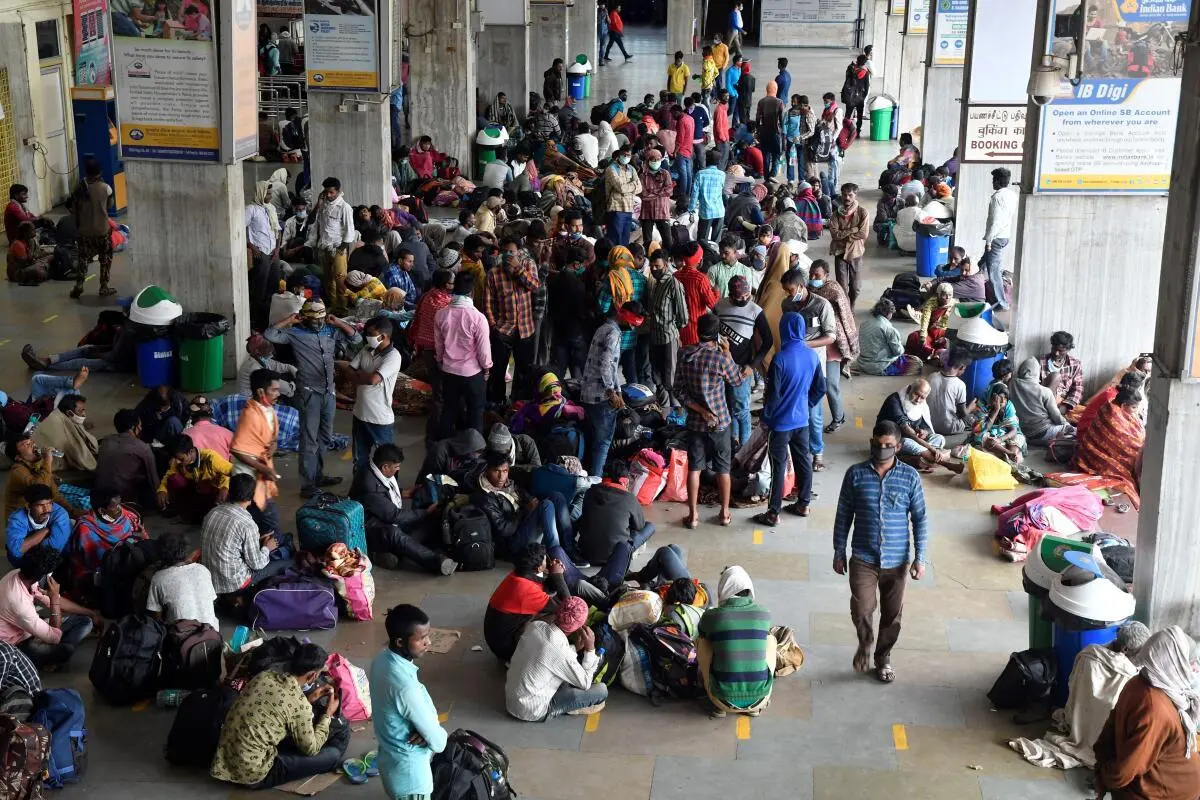
Bihar is one of the largest exporters of migrants throughout the country.
| Photo Credit:
R. Ragu/The Hindu
According to you, how much reservation should there be in India in government jobs and educational institutions? Should it be “Jitney Abadi Utna Haq” (proportional representation), as Rahul Gandhi has said? Do you think it should go up?
The original idea was to keep it up to 50 per cent. The assumption was that the non-reserved part of the seats would eventually match population demographics. So when the time comes, we would know that the socially disadvantaged groups have managed to compete for the so-called general seats. That would be the time we don’t need any reservations. That’s why the scope was kept a little bigger.
But that has not happened—you only have up to 50 per cent of seats being filled. In higher education, even in universities like JNU, reservations were filled for the first time in the late 1990s. We’re really talking about attempts by those controlling institutions at a micro level to subvert the reservation and not implement it, and this is across political ideologies and whichever party ruled the State.
The primary goal was to subvert reservation policies in whatever form. That’s precisely why there have been gains, but they’re not complete because the attempt was not genuine. It’s only with what we call the second wave of democratisation—the third wave after the 1980s—that people from backward castes obtained political power and were able to push the agenda of fulfilling reservations for the first time. Reservation isn’t something where bureaucrats from the ‘50s onwards simply said, “Now that this policy has come, let’s implement it effectively.” They did everything possible to not implement it.
To subvert it. Absolutely. When we think about caste and look at the higher judiciary, we’re just about to get a Chief Justice from Maharashtra who is a Dalit, I think the second in India’s history, which is symbolically significant. Look at the media—we don’t have adequate subaltern voices in the mainstream media. The Lalu Prasad era was about asserting and breaking psychological shackles. However, you just don’t get a sense of an ideal path ahead. At the same time, you have this curious problem, which I flagged already—that skilled labourers are earning more than educated graduates. Those educated graduates could be from all castes, including the upper castes, and they are not getting employment today.
Very much so. Because as I said, the share of well-paid employment—jobs are there, but when we talk of well-paid employment with social security benefits, medical benefits, and pensions—when we think of that, the share of jobs has shrunk completely. You only have hardly 3-5 per cent of jobs in this country that have the best social security provisions and are well-paid. Ninety-five per cent of the population is part of the infamous informal sector, where wages are extremely low, with no social security provisions and no access to medical facilities.
Regarding the census, what I would like to highlight is that there is opposition to including caste, but what we don’t understand is, for example, gender as a category—if we had not included it, we would not have known that there is gender disparity, that there are more males than females. Secondly, we would not have known that certain States are known for female infanticide.
If you record gender, you at least know there’s a social problem you can work on. Similarly, if you record caste, we will have patterns and concrete evidence to address known problems. If you don’t record information, you cannot work on it. It’s not only about social justice or getting reservations—it’s about having a balanced society and not allowing such crimes to happen.
Another comparable example is poverty. India has been recording the number of poor people since Independence. Because we have statistics on poverty—whatever our disagreement with how poverty levels are defined—we can talk about poverty and work on reducing it. Similarly, if we add caste to the census, we will have figures to discuss and debate. The Supreme Court has consistently rejected many petitions by saying we don’t have concrete information. So let’s have that information.
India is a society where you put all your private information in matrimonial advertisements—your caste, your gotra, everything—yet there’s opposition to the census, which is actually anonymous. Even though you are recorded, the information is anonymous; it doesn’t specifically tell about any individual.
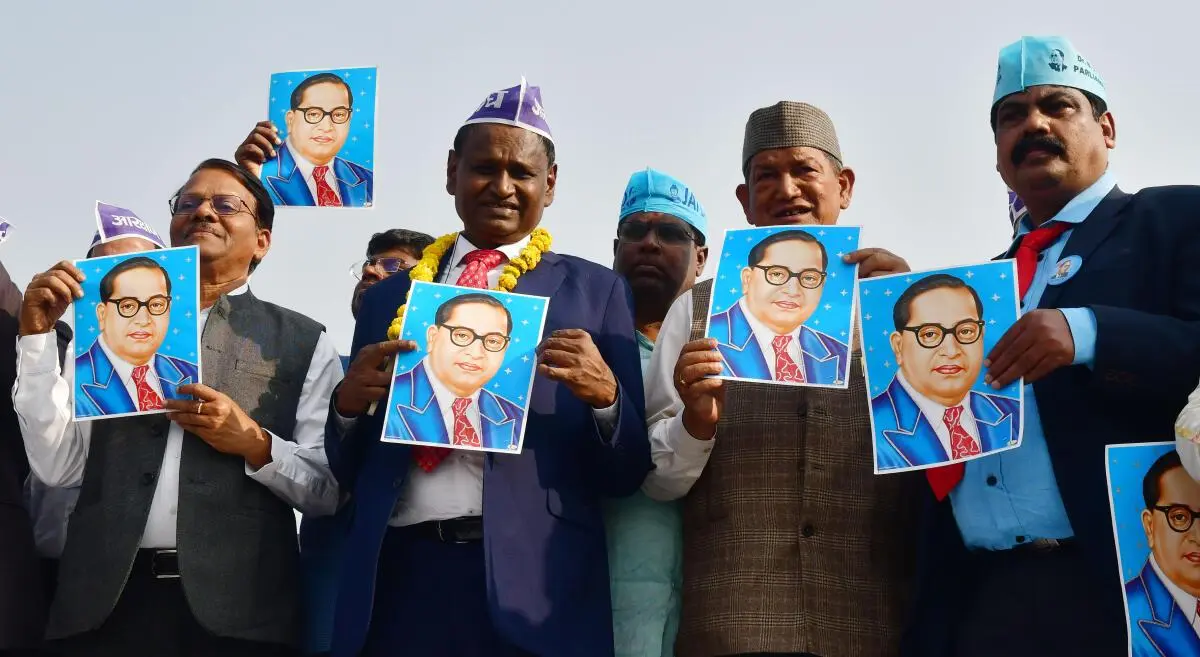
As far as caste in Maharashtra is concerned, there is a long history of the non-Brahmin movement beginning in the 19th century with Mahatma Jyotirao Phule and further when Ambedkar takes up the baton of leading the social justice movement.
| Photo Credit:
SHIV KUMAR PUSHPAKAR/The Hindu
Is birth rate linked to poverty levels?
Caste and birth rate—yes. The more landed families, the more dominant castes—that’s where the issue of female infanticide is more prominent, with Haryana being the most prominent State. You have a massive imbalance in sex ratio there. This has also trickled down to several other States, including Maharashtra. People talk about progressive Maharashtra, but the landed families there have also engaged in female infanticide practices.
Since you work on migration and labour rights, has there been any meaningful land reform? There have been in parts of India, and it has transformed places, but may I ask you about the situation of land distribution and access to land for poorer Indians?
I don’t think we have had proper land reform. And we don’t talk about the quality of land that has been given. Is it barren land? Is it cultivable? Wherever we celebrate figures, like in West Bengal, what we don’t understand is whether that land can actually enable a family to sustain themselves and have mobility. We don’t just need land reforms; we need quality land. You can’t give barren land to somebody and say land distribution is done. Politicians talk about giving jobs—of course we should give jobs—but nobody talks about quality jobs, well-paid jobs.
Do you think India has eliminated poverty in the manner it should have?
The answer is no. One simple reason is that you don’t pay enough to your working population. People are poor not because they don’t work or do anything; it’s because they are not well-paid. If you look at the informal sector anywhere in the country, the wages are abysmally low. They can’t sustain their livelihood. One incident in a family—an accident or something—and you drop down.
Over the last few years, we’ve seen India’s dominant party give out free rations and cash to women. In Maharashtra, your home State, has that helped people? Or is it just something that people take for granted? Without creating good health or education structures, I see that as a problem.
You’re absolutely right. Public infrastructure has been shrinking—hospitals, schools, employment—and that’s precisely why you have to do this whole ration distribution. If people actually had enough resources, they wouldn’t need these benefits from the State.
Also Read | Inside DMK’s push and claim on caste census
In fact, someone was telling me that in some areas, the quality of the ration is so poor that people are just collecting it and giving it to cattle. In some places it’s good, in some places it’s bad—it really depends.
Totally.
Is there anything else you would like to add about the caste census before we wind up?
As an academic, I would like to highlight that this data is important for scholars. As scholars, we rely on large-scale authentic data. Whether it’s history, economic history, or labour history—sociologists or anthropologists—we all have used this data historically. As a labour sociologist, I’m interested in occupational choices, and unless we have longitudinal data, we cannot see whether things have changed over the years. By not documenting this from 1951, as scholars, we don’t have those resources to analyse patterns. It’s not just about social justice—having caste in the census is not at all problematic. It will only enhance discussion. It’s about confronting the problem, if any.
Saba Naqvi is a Delhi-based journalist and author of four books who writes on politics and identity issues.
Source:https://frontline.thehindu.com/interviews/caste-census-india-implications-sociologist-sumeet-mhaskar-interview/article69556498.ece

